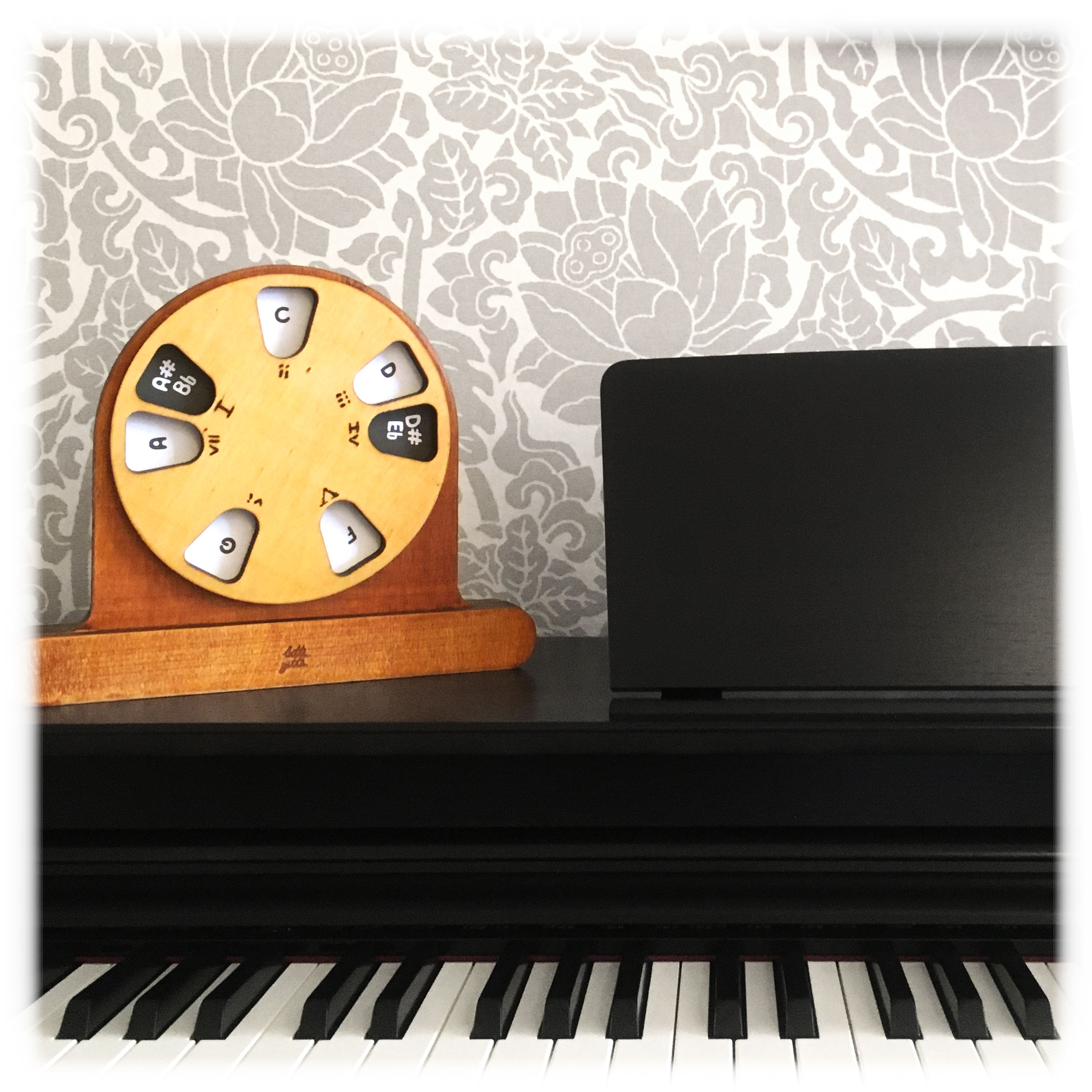There’s something extraordinary about the act of creation. It's an exploration, a journey through uncharted territories of the mind, where each step taken is filled with the kind of wonder only pioneers of the unknown can appreciate. In the intricate world of music, where patterns of notes swirl together in beautiful but complex arrangements, simplicity married with function is often the most challenging design to achieve.
Erbil Sivaslioglu embarked on such a journey when he envisioned and brought to life the Wooden Musical Wheel. It’s an emblem of simplicity, crafted with the precision and care of a mind that values both form and function. Yet, beneath its simple wooden facade lies a tool that can unravel the very fabric of musical theory, making the invisible visible, and the complex beautifully approachable.
Patterns in Complexity
The Conception of the Wooden Musical Wheel The inception of the Wooden Musical Wheel, like all great ideas, started with a problem – the abstraction and complexity of music theory. For budding musicians, understanding scales, chord structures, and their relationships can often feel like wrestling with an implicit, constantly shifting beast. The quest was to find a way to represent these abstract concepts visually and intuitively.
Imagine a simple wooden circle split into two parts. One part is fixed, displaying laser-engraved notes, while the other rotates freely, revealing through cleverly positioned holes the relationships and intervals that make up scales and chords. This deceptively simple visual aid can illuminate the mysterious inner workings of music theory merely by turning the wheel.
A Craftsman’s Triumph
Erbil's design process was distinctively iterative. He wasn't simply creating an object; he was crafting a bridge between the tangible and the theoretical. Crafted from prime quality birch wood, each wheel is meticulously varnished with beeswax and flaxseed oil, providing not only durability but a tactile warmth that invites touch – an oft-forgotten but crucial element in physical learning tools.
He could have easily opted for a digital solution. After all, the world is brimming with apps and software designed to demystify music. But what they often miss is the visceral connection that comes from physically interacting with a learning tool. Turning the wooden segments brings an element of mindfulness into the learning process; it's an exercise in patience and discovery.
Discovering the Diatonic: Visualizing Scales
In music, scales are the foundation upon which melodies and harmonies are built. However, their abstract nature often makes them daunting to musicians of all experience levels. Erbil’s Wooden Musical Wheel transforms this complexity into something as simple as turning a wheel.

Each interaction with the wheel brings to light the construction of scales across all twelve keys. The visual display delineates the whole and half steps in a scale, showing all "the right notes" in relation to one another. This tool isn't about memorization; it's about understanding. The patterns and relationships reveal themselves, allowing users to see the structure behind the sound.
Chord Constructions Made Simple Once a musician understands scales, the next leap is often into the world of chords: constructing, understanding, and transitioning between them. Here again, the Wooden Musical Wheel shines. Whether it's practicing major, minor, augmented, or diminished chords, or even delving into the complexities of 7th, 9th, and 13th chords, the wheel offers a clear and accessible guide.
By simply rotating the wheel, musicians can visualize which notes fit together harmoniously. The laser-engraved scale degrees increase legibility and simplicity, ensuring that the user’s focus remains on the music itself rather than on deciphering the tool.
A Tool for Practice and Composition One of the most beautiful aspects of the Wooden Musical Wheel is its versatility. It’s not merely a tool for practice; it’s a catalyst for composition. For songwriters, understanding the relationships between notes and chords is essential. The ability to visualize these relationships transforms the songwriting process from a hit-or-miss attempt into a structured yet creative endeavor.
Imagine sitting down with an instrument, the wooden wheel in hand, effortlessly transposing existing tunes or experimenting with new chord progressions. The visual aid significantly reduces the trial-and-error approach, grounding the creative process in a solid understanding of music theory.
The Role of Handcraft in an Age of Digital Solutions
We live in an era that often prioritizes the digital over the physical. It's easy to overlook the incredible value of a handcrafted tool in favor of the latest app or software. But Erbil Sivaslioglu’s vision for Bitti Gitti runs counter to that trend. His crafting process, the FlowCraft™ method, emphasizes mindfulness, quality, and a deep connection to the materials being used.
Handcrafting each Wooden Musical Wheel is not merely about creating a product; it’s about imbuing each piece with the dedication and passion of its maker. The tactile nature of wood, with its natural feel and warmth, provides a direct connection to the music being studied. It’s a reminder that while technology evolves, the essence of learning often lies in simpler, more tactile experiences.
The Human Element: Learning with the Wooden Musical Wheel Ultimately, the Wooden Musical Wheel is not just a tool; it's a companion in the musical journey. Each note turned on the wheel is a step towards mastery, each chord progression a bridge to deeper understanding. It fosters an environment where learning is not a chore but a joyful exploration.
The accompanying booklet, which explains basic music theory principles, acts as a guide, leading musicians through the initial stages of their educational journey. It supports the user in making the most out of the wheel, ensuring that the tool's potential is fully realized.
A Vision Realized
Erbil’s vision for Bitti Gitti was to create tools that blend craftsmanship with functionality, simplicity with depth. The Wooden Musical Wheel stands as a testament to this vision. It reaffirms the value of physical craftsmanship in an increasingly digital world and offers a unique, human approach to learning music theory.
The Simple Beauty of Understanding
In the end, the Wooden Musical Wheel is more than the sum of its parts. It is a handcrafted wooden circle, engraved with notes and holes. Yet, its true value lies in its ability to render visible the complex patterns of music theory. It's a tool that allows musicians to not only practice and compose but also to understand – really understand – the relationships between notes, scales, and chords.
As we journey through the complexities of music, the Wooden Musical Wheel serves as a guide, a companion, and a bridge between the tangible and the theoretical. It is a manifestation of Erbil Sivaslioglu’s mindful approach to craftsmanship and his unwavering commitment to blending the art of making with the joy of learning.





